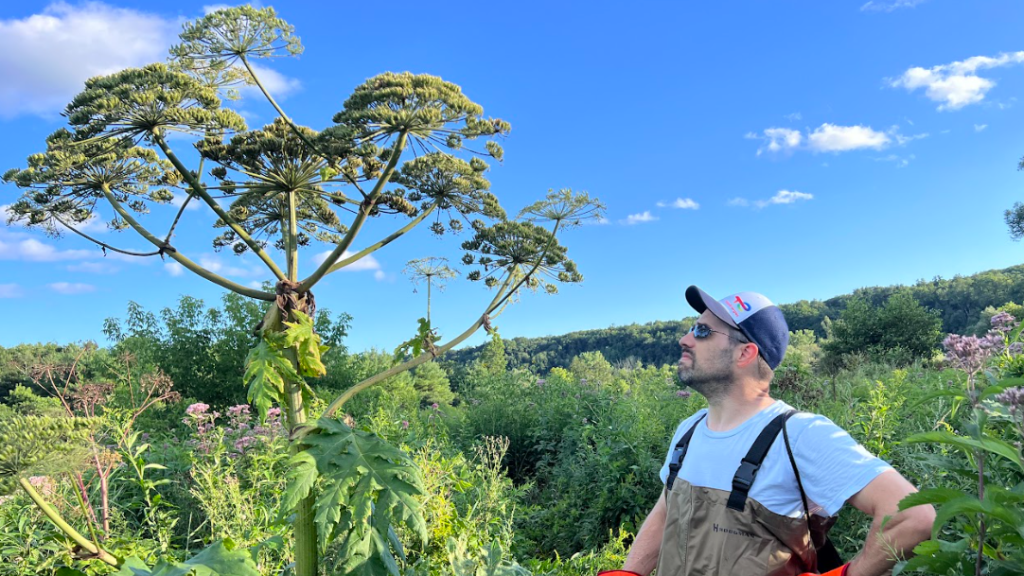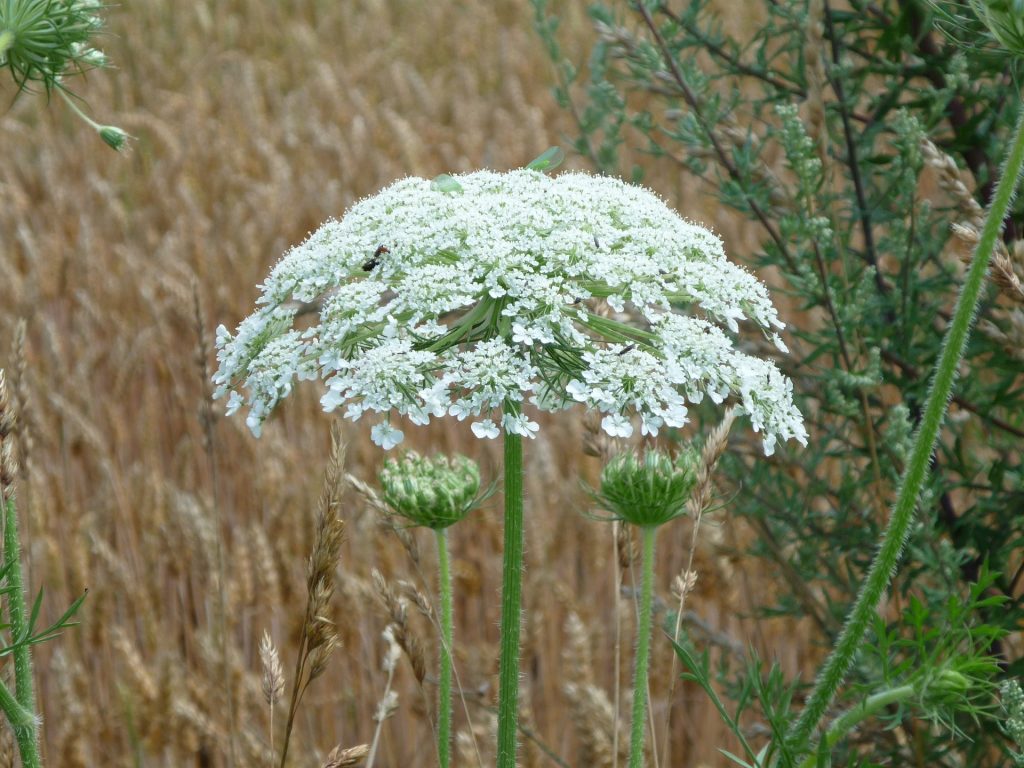Giant Hogweed continues to spread in Waterloo Region

Posted Jul 10, 2024 05:11:18 PM.
Last Updated Jul 11, 2024 11:27:34 AM.
A group dedicated to the removal of Giant Hogweed believe it’s becoming more of an issue in the region.
The Giant Hogweed Mitigation Project’s creator, John Kemp, told CityNews Kitchener it’s expanding by 500 per cent every year. They’ve noticed it’s worse this year then last.
“Next year it will be five times worse. And in 2027 it will be 25 times as bad as it is this year,” he said.
Giant Hogweed is an invasive and dangerous species whose sap is known to cause severe dermatitis or inflammation. Kemp said it can often take up to 48 hours to see the effects of Giant Hogweed, which poses a problem because if that inflammation is exposed to sunlight, it can cause a significant burn.
Along with that, it can also cause purplish scars or blisters to form. There have also been reports in the past of it causing temporary or permanent blindness if the sap is exposed to the eyes.
Kemp and his team wear hazmat suits when removing any of the plants, noting they have been burned themselves several times over the years.
“You have to wait until the plant has exhausted all its energy making seeds and then remove seeds and have it destroyed,” said Kemp, adding the best time to hunt and remove them is in April.
By late July, Giant Hogweed becomes more visible, growing above vegetation often reaching about 6 ft. tall. Kemp said the largest one they ever removed was about 15 ft. tall and 5 inches in diameter, of which they collected nearly a whole garbage bag full of seeds.
“May, June, July and August — that’s your primary for injury — that’s the time when people are wearing fewer clothes, so they have more skin exposed,” he said.
Kemp added that they’ve seen spots along riverways that are completely blocked off by Giant Hogweed and expect it to get worse. In a couple of years, Giant Hogweed could make it a lot harder to launch or land boats without people having to push through it.
“Over 1,700 hundred populations reported this year between St. Jacobs and the Six Nations.”
The CEO and medical officer of health for Wellington-Dufferin-Guelph Public Health, Dr. Nicola Mercer, said in a statement that the first documented case in the province dates back to the 1940s.
“It is important to know that Giant Hogweed is present in our region and can pose a risk to the public,” said Mercer. “WDG Public Health encourages residents to avoid purchasing, trading or growing Giant Hogweed. If discovered, many municipalities have reporting programs and other resources to assist residents, but removal of Giant Hogweed is best done by a professional.”
Giant Hogweed can be mistaken for Wild Parsnip, Queen Anne’s Lace, Cow Parsnip and Angelica.
Kemp said Giant Hogweed is ten times bigger than Queen Anne’s Lace.

Giant Hogweed can produce up to 120,000 winged seeds which often spread through rivers and waterways. The plant itself likes to be close to water resources and grows in muddy environments. Kemp mentioned that so far this month, they have already removed about 250 pounds of seeds.
Once the sap from the plant dries out, it’s not considered poisonous anymore.
The Grand River Conservation Authority (GRCA) said in a statement they have a program to eliminate the plant from any of its property.
“It is a persistent species that is difficult to remove. In the past, giant hogweed has been found on several GRCA properties near Belwood Lake, St. Jacobs, Kitchener, Guelph and Cambridge.”
“The GRCA tries to eradicate giant hogweed whenever it is confirmed to be present on GRCA property. Options for removal include spraying a herbicide or digging it out. The only exception when we do not try to remove it is when access to the area is unsafe or impossible. GRCA staff take strict safety precautions when dealing with giant hogweed. Staff indicated there seemed to be an anecdotal increase in the number of plants found on GRCA property a few years ago, but we have not noted an increase on GRCA properties this year. We do receive reports, many of which turn out to be either not on GRCA property, or not giant hogweed (but angelica or one of the other look-a-likes).”
If you find Giant Hogweed on GRCA property you can contact them to have it removed.
Anyone who finds them in Kitchener, Waterloo or Cambridge can contact their city hall. The region provides weed inspection services in the four townships that people can contact to get Giant Hogweed removed.
More information about Giant Hogweed can be found here.








